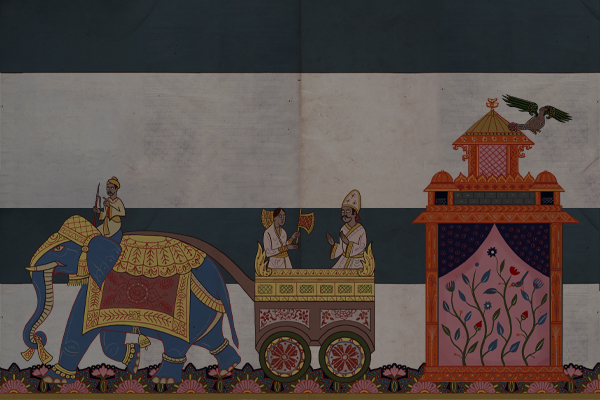Sengoku Jidai: Shadow of the Shogun will be available on PC tomorrow, Thursday May 19, both in standard and in a Collector's Edition containing unique content. And don't miss the release twitch stream tomorrow evening at CEST 8 PM / UTC 6 PM / EDT 2 PM on our official twitch channel!
Manchu
The Manchus originated from the Jurchen tribes who settled in present-day Manchuria. During the 16th century, the tribes were unified under the leadership of Nurhaci and were organised into the Eight Banners. The Jurchen banner armies fought in a similar manner to other steppe armies like the Mongols. They fielded mounted archers, some armoured, some unarmoured.

By 1622, the Jurchen had a substantial population of assimilated Han Chinese. These formed the core of the Jurchen foot units which utilised the same equipment and tactics as the Ming. A contingent of Ming artillerymen surrendered to the Jurchen during the fall of Yongping in 1629. These guns were influential in the subsequent battles against the Ming.
Hong Taiji succeeded Nurhachi and changed the name of the Jurchen to Manchu in 1635. In 1636, Hong Taiji proclaimed the creation of the Qing Dynasty. The Qing differentiated Han bannermen from ordinary Han subjects and created the Green Standard Army in 1644. The Green Standard Army would subsequently see much of the fighting against the remnants of the Ming. The original Banner Armies were now considered royal guards.
Manchu armies during the Qing period fought in a similar way to the Ming. They formed mixed battalions of protected missile troops and utilised a large amount of artillery. Close combat units of swordsmen with large rattan shields were commonly fielded. Cavalry remained an important component of the army and were still composed of the traditional horse archers.

Mongols
The Mongols were split into two major groups during the 1600s, the Oirats of western Mongolia and the Khalkha of eastern Mongolia. The Khalkha were often referred to as the Northern Yuan, paying homage to the former rulers of China, the Yuan Dynasty.
Mongol armies were composed of mounted archers. Higher quality units would wear lamellar or brigandine armour. Standard steppe hit and run tactics were prevalent.

Wokou
Wokou pirates raided the Chinese and Korean coasts from the 13th to the 16th centuries. They used Japanese-style weaponry like the yari, katana, and yumi. They were also enthusiastic users of Portuguese matchlocks. Due to their sea-faring nature, they did not wear heavy armour and most would usually be unarmoured. They were organised into several bands of warriors with mixed weaponry.

Banners and Flags
Each faction in game has unique banners matching those actually used in history. Note that icon banners will deteriorate as a unit takes losses, so damaged regiments are rather easy to spot on the battlefield.
Japanese Banners
Japanese troops may be pretty hard to distinguish when fighting against fellow Japanese. That is because a common uniform for a unit was rare despite popular depictions. No clan would wear something unique to their clan. Sengoku era armours were predominantly lacquered black or brown with different colour lacing. Some samurai wore red armour. Some samurai wore bulkier and more colourfully laced classical armour of an older era. The lack of a military uniform gave rise to several means of identification.
Sode Jirushi were small emblems attached to the shoulders and arms, only useful to distinguish friend from foe in close combat.
Sashimono were banners worn on the backs of the soldiers. These are probably the most unique and iconic of all Sengoku flags, but we did not use them in the game as they are not appropriate for the scale of the unit blocks.
Hata Jirushi were tall narrow unit banners hung from a cross bar. These flags fell out of favour during the Sengoku Jidai, but in the game you will see them used in the Honjin.

Nobori were tall stiffened flags used to identify units with a similar construction to the sashimono. These were the most prominent flags on Sengoku battlefields and are the ones used for identification and depicting unit quality.
As in real life, the player needs to familiarise himself with the nobori being used by his clan and the opponent as there are no real clan uniforms. Historically, prominent generals had their own flag designs but we don't go that far in the game.
Another tip for those playing Japanese: missile foot units (yumi and teppo) wear brown armour, close-fighting foot units black or red.
Ming and Joseon Banners
Ming Chinese and Joseon Koreans have similar banners (although the Korean flags have longer tails) because the Joseon civilisation adopted several aspects of Chinese culture. What we see in the game are three of the Four (actually Five) Guardian Creatures of Direction.
English Name / Chinese Name / Korean Name / Japanese Name
Azure Dragon / Qing Long / Cheong-ryong / Seiryuu (East)
White Tiger / Bai Hu / Baek-ho / Byakko (West)
Black Turtle / Xuan Wu / Hyeon-mu / Genbu (North)
Vermilion Bird / Zhu Que / Ju-jak / Suzaku (South) [not in game]
Yellow Dragon /Huang Long / Hwang-ryong / Kouruu (Centre) [not in game]
Their use was most probably to show positions in a formation (left wing, right wing, centre, etc.), but we don’t go that far in the game.

Jurchen / Manchu / Qing Flags
The Jurchen tribes later called themselves Manchu and became the Qing Dynasty, the last dynasty of China. They went by the Eight Banners system.
These banners were used for both administrative and military purposes. The banner system organised Manchu society from fragmented tribes into unified armies. Membership of a banner did not go by ethnicity, Chinese and Mongols were also accepted. Before and during the Manchu invasion of the Ming, Chinese defectors were incorporated into the banners. When the numbers became too large, the "Old Han Army" created their own eight banners. The subjugated Mongols too had their own banners. But eventually, the growth of the banners stopped. They formed the core and the most elite of the Qing dynasty army, while the rest were relegated to the Green Standard Army. The Green Standard Army eventually saw more fighting than bannermen.
The game only shows the plain Yellow Banner which was considered one of the most elite "upper" banners. The skirmish army lists have banner armies, mixed armies, and pure Green Standard armies.

Mongol Banners
The Mongols used a combination of flags and tugs. Average Mongol units carry two flags, while Superior Mongol units carry two flags and a tug. A tug is a standard made of horse or yak hair. A white tug is used during peace time and a black tug during war. Skirmishers don't carry flags, but we gave the Superior skirmisher units a tug.








